Tony Franks
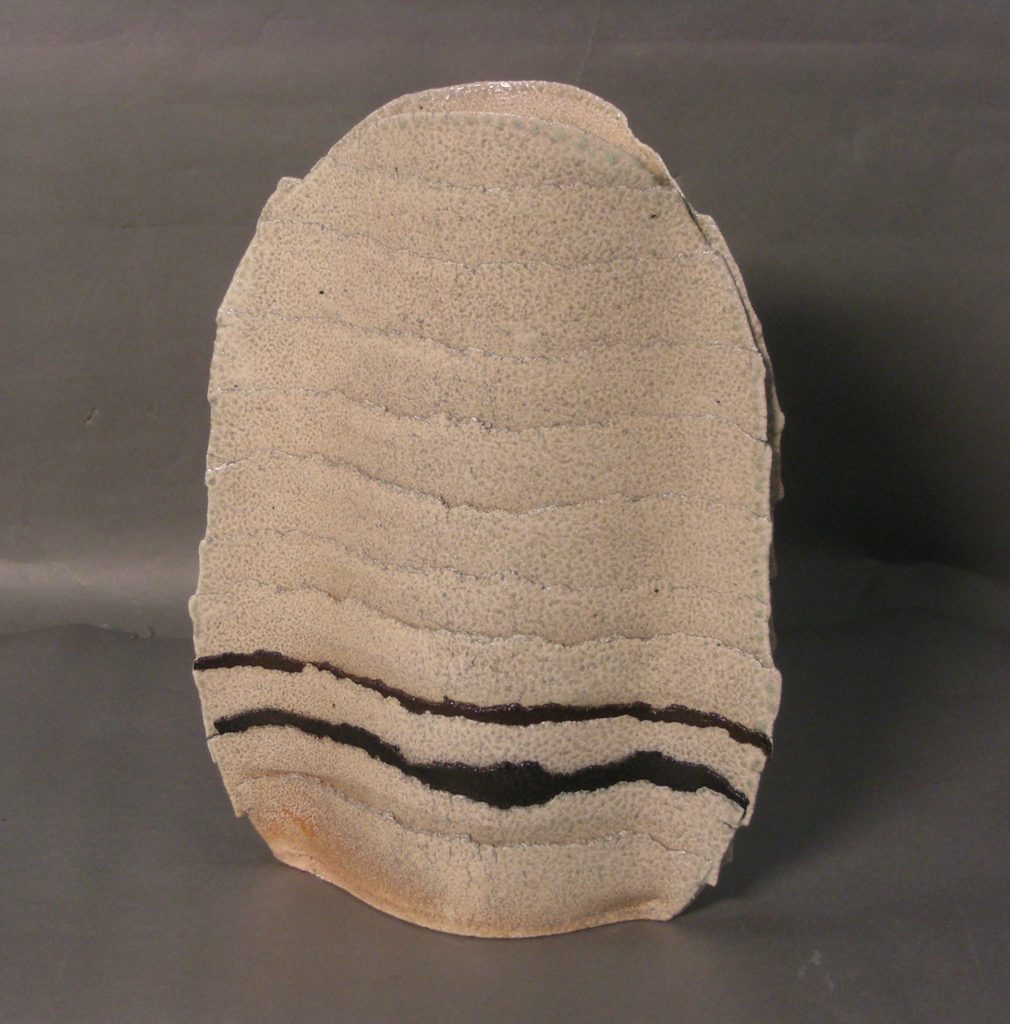
(b. 1940) born in Birmingham, England, lives and works in Edinburgh, Scotland
Two Horizons, 1973
stoneware, 11.25 x 8.5 x 2.75 inches, 93.39.85
Tony Franks was working as a geography teacher at a grammar school when an art teacher colleague asked for his help instructing the students in clay. Franks recalls, “[The art teacher] was a painter and I was a geographer, and neither of us knew anything about clay so when we fired the kid’s stuff it all blew up. He said one of us should learn how to do it properly so I ended up enrolling in evening classes and I just thought it was great.” Franks quickly fell in love with ceramics, and within a year quit his job as a geography teacher and started teaching ceramics. He taught as the head of ceramics at the Edinburgh College of Art for over 30 years. He has been active in professional organizations as well, and from 2000-2006 he served as the president of the International Academy of Ceramics, a nonprofit that encourages connection and cooperation amongst the world’s ceramicists.
In the spring of 1971, under the auspices of the International Academy of Ceramics, the Tennessee Arts Commission pledged its support for the promotion and establishment of the U.S. International Ceramic Symposiums. The Symposium’s mission to help develop a worldwide network of support for ceramic art was achieved by bringing together top ceramic artists from around the world for a month-long sharing of ideas and creation of innovative ceramics.
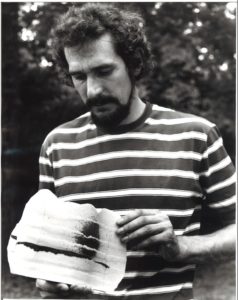
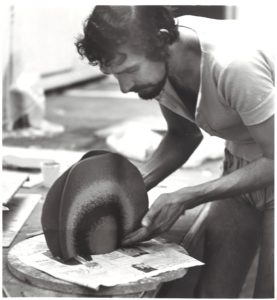
Left: Franks with one of his paper thin ceramic works, Right: rolled and pressed white stoneware with metallic oxides, photo is in 1973 ICS catalogue Additional images below
Franks represented England at the First U.S. International Ceramic Symposium, which consisted of twenty-five artists from thirteen different countries, and was hosted in the summer of 1973 at the Memphis Academy of Art. The pieces he made during the symposium were made using a technique inspired from his background as a geography teacher; Franks would press clay into very thin sheets, which he overlapped like layers of earth to build up banded slabs. These would be wrapped into cylinders and combined to create gently curving raku forms.
Franks’ art draws much inspiration from the natural world, and sometimes incorporates organic materials like leaves and moss into the clay itself in order to establish a physical link between the work and a specific place. His process of creation mirrors the natural geologic processes of erosion, accumulation, and degradation. He prefers to work alone, so that he can better pay attention to the physical details of the environment.
Having studied and taught geography, Tony applies his interest in the physical structure of the earth to his forms in ceramics. “I am more involved with the structure and the surface than I am with the functional problems. I tend to work in very thin section materials.” – 1973 International Ceramic Symposium catalogue
Written by Aiden Layer, TN Arts Intern
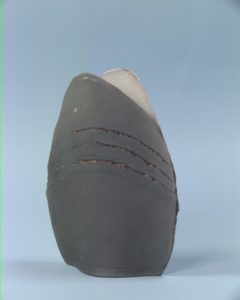
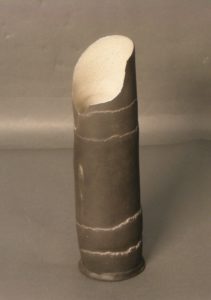
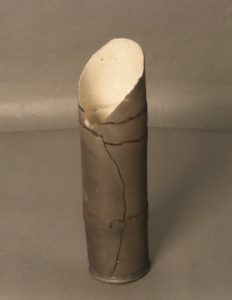
Left: Copper Cloud, 1973, clay, 8.5 x 6.5 x 2.75 inches, 93.39.99 Center: Silver Cloud, 1973, stoneware, 9 x 2.25 x 2 inches, 93.39.199, Right: Black Cloud, 1973, stoneware, 8.5 x 2.25 x 2.25 inches, 93.39.200

